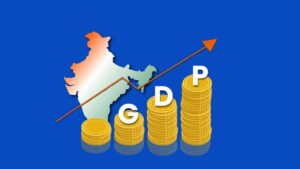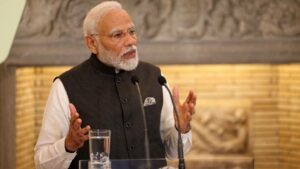The New Year has begun amid positive signals for the Indian economy, stock markets, and equity investors. A sense of optimism is in the air as India is now the world’s fifth largest economy in the world. If S&P Global Market Intelligence’s latest issue of PMI is to be believed, it is likely to overtake Japan to become the world’s third-largest economy by 2030. We see no reason not to believe. The US at present is the world’s largest economy with a GDP of USD 25.5 trillion. It makes up for a quarter of the world’s GDP. China is the second largest economy with a GDP size of about USD 18 trillion, which is almost 17.9 per cent of the world GDP. Japan is a distant third with USD 4.2 trillion GDP, followed by Germany with USD 4 trillion GDP.
In fact it has been a gradual up move, started right during the high time when the world was reeling under Covid. Three years it was a rapid economic growth – 2021, 2022 and 2023. According to the National Statistical Office’s new data India’s gross domestic product may expand at a higher-than-expected rate of 7.3% in real terms in the current fiscal, compared with 7.2% last year. The estimate is made on the basis of the national income data computed for the first half of the year and several high-frequency indicators for the October/November period. Fitch Ratings has also said in a report that it expects India to be among the fastest-growing nations in the world in the next fiscal, with resilient GDP growth of 6.5 percent in 2024-25.
Responding the International Monetary Fund’s forecast of general government debt overshooting 100% of the GDP under a worst-case scenario by FY28, the finance ministry has already stated the Centre is “on track to achieve its stated fiscal consolidation target” of reducing fiscal deficit below 4.5% by FY26. During the April-December 2023 period, gross GST collection witnessed a robust 12% y-o-y growth, reaching Rs 14.97 lakh crore. The average monthly gross GST collection of Rs 1.66 lakh crore in the first 9-month period this year represents a 12% increase compared to the average recorded in the corresponding period of FY23. Mutual fund assets under management have risen from to Rs 47.8 trillion in October 2023. So we see no negative trigger as such.
India has already entered into a multi-year capex cycle. Increased public capital expenditure and all-time high capacity utilisation will give good results. In 2023 we saw an increased focus on key government sectors such as defence, railways and infrastructure. It will continue because these are the basic movers and very crucial for long-term development. The financial services sector is also poised for growth. Government’s Production Linked Incentive scheme is also encouraging domestic manufacturing and augmenting sectoral growth. The country’s favourable demographics and low labour costs make it an attractive manufacturing hub. The push for infra development and local manufacturing is set to directly benefit rural income levels. Impressed with these developments countries ranging from large economies like Europe, and the UK to smaller ones, including Oman and Peru, want to have a free trade agreement with India due to the country’s large and rapidly growing market.
However all is not well on the globe. Violent conflict is increasing in multiple parts of the world. As Russia-Ukraine conflict was still at its peak Hamas’s October 7 attack on Israel, and the Israeli offensive on Gaza, raised the specter of a wider war in the Middle East. Iran-backed Houthi rebels are regularly attacking shipping vessel. Despite all these the global challenges, the Indian market offers stability to investors due to its large and diversified economy, robust domestic demand and ongoing economic reforms. The fast-growing middle class is helping to drive consumer spending and as the domestic consumer market grows along with large industrial sector India is becoming an important investment destination for a wide range of multinationals in many sectors. The acceleration of foreign direct investment inflows over the past decade reflects the favourable long-term growth outlook for the Indian economy.
We feel market will be highly volatile till the announcement of results of Lok Sabha election. So investors should keep booking profits. This is not the time to be leveraged in equity however, use any correction as an opportunity to enter. Over 6 crore new individual investors entered the markets in the last two years alone. Over six to eight lakh new investors are continuing to enter the capital markets every week and the total investor base has breached 15-crore mark now. Year 2023 added around 3.20 crore new investors. These are the vulnerable lot. And they need to be extra cautious.





















